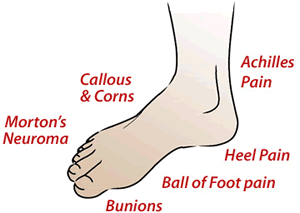Home Cure For Foot Pain
When a cause cannot be determined, any pain on the ball of the foot is generally referred to as metatarsalgia It is most likely caused by improper footwear, particularly high heels, or by high-impact activities. People with a high arched foot are prone to develop metatarsalgia. Midfoot Tarsal tunnel syndrome results from compression of a nerve that runs through a narrow passage behind your inner anklebone down to your heel. It may be caused by injury to your ankle, such as a sprain or fracture, or by a growth that presses against the nerve. Excessive Pronation Plantar bursitis is a bony outgrowth at the base of the heel bone close the plantar fascia. A spur can induce hurt on the bottom of the heel when you stand. Every Bit with plantar fasciitis, the pain may minify standing or walking a short time. The nuisance you experience is not from the spurring itself, but preferably your heel aches because the spur pinches a nerve or contracts against the plantar bursa. With a bursitis or inflamed bursa it may give pressure to the plantar fascia. Foot pain can affect any part of your foot, from your toes to your Achilles tendon at the back of your heel. If you stop to think about it - when the tread on your car's tires begin to wear down you replace the tires. We know that worn out tires can negatively affect the gas mileage, safety in wet weather, our ability to stop as required etc. For those who exercise regularly or are in a job that requires considerable periods of standing on your feet, it is crucial that you replace your shoes as soon as you notice wear on the outside. Generally, you cannot sue your employer if you fall at work. Injuries sustained at work are covered under your state's workers' comp laws. Most (young) women like to look stylish and wear a shoe with a medium to high heel. The problem with high heels is that your bodyweight is not evenly distributed across the underside of the foot, but rather 80% of your weight pushes down on only one area of the foot, the forefoot area. i.e. the balls of your feet. This is totally unnatural and before long the entire forefoot structure collapses, leading to constant pressure and friction in the ball of the foot. The body reacts and builds up thick layers of callous in this area which in turn leads to a burning sensation under the foot. First and Foremost; the warm up and cool down should never be optional in your running routine. Cold muscles are at the highest risk for injury; by increasing the temperature of your muscles by warming up they will be more flexible and have an increased speed of motion. Warming up can loosen your muscles and soft tissue as much as 20 percent. The cool down allows blood to continue flowing through your muscles, working its way more slowly from a high level of exertion to its normal resting condition. Take the time, it's worth it!
If you stop to think about it - when the tread on your car's tires begin to wear down you replace the tires. We know that worn out tires can negatively affect the gas mileage, safety in wet weather, our ability to stop as required etc. For those who exercise regularly or are in a job that requires considerable periods of standing on your feet, it is crucial that you replace your shoes as soon as you notice wear on the outside. Generally, you cannot sue your employer if you fall at work. Injuries sustained at work are covered under your state's workers' comp laws. Most (young) women like to look stylish and wear a shoe with a medium to high heel. The problem with high heels is that your bodyweight is not evenly distributed across the underside of the foot, but rather 80% of your weight pushes down on only one area of the foot, the forefoot area. i.e. the balls of your feet. This is totally unnatural and before long the entire forefoot structure collapses, leading to constant pressure and friction in the ball of the foot. The body reacts and builds up thick layers of callous in this area which in turn leads to a burning sensation under the foot. First and Foremost; the warm up and cool down should never be optional in your running routine. Cold muscles are at the highest risk for injury; by increasing the temperature of your muscles by warming up they will be more flexible and have an increased speed of motion. Warming up can loosen your muscles and soft tissue as much as 20 percent. The cool down allows blood to continue flowing through your muscles, working its way more slowly from a high level of exertion to its normal resting condition. Take the time, it's worth it!